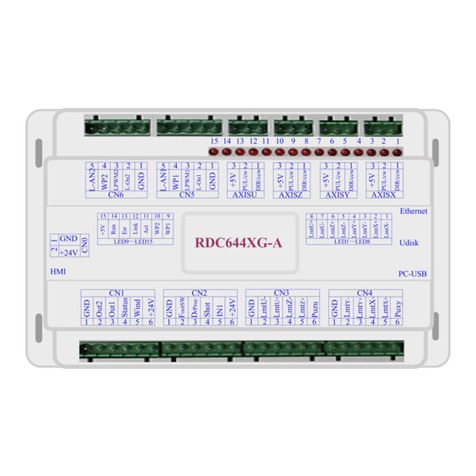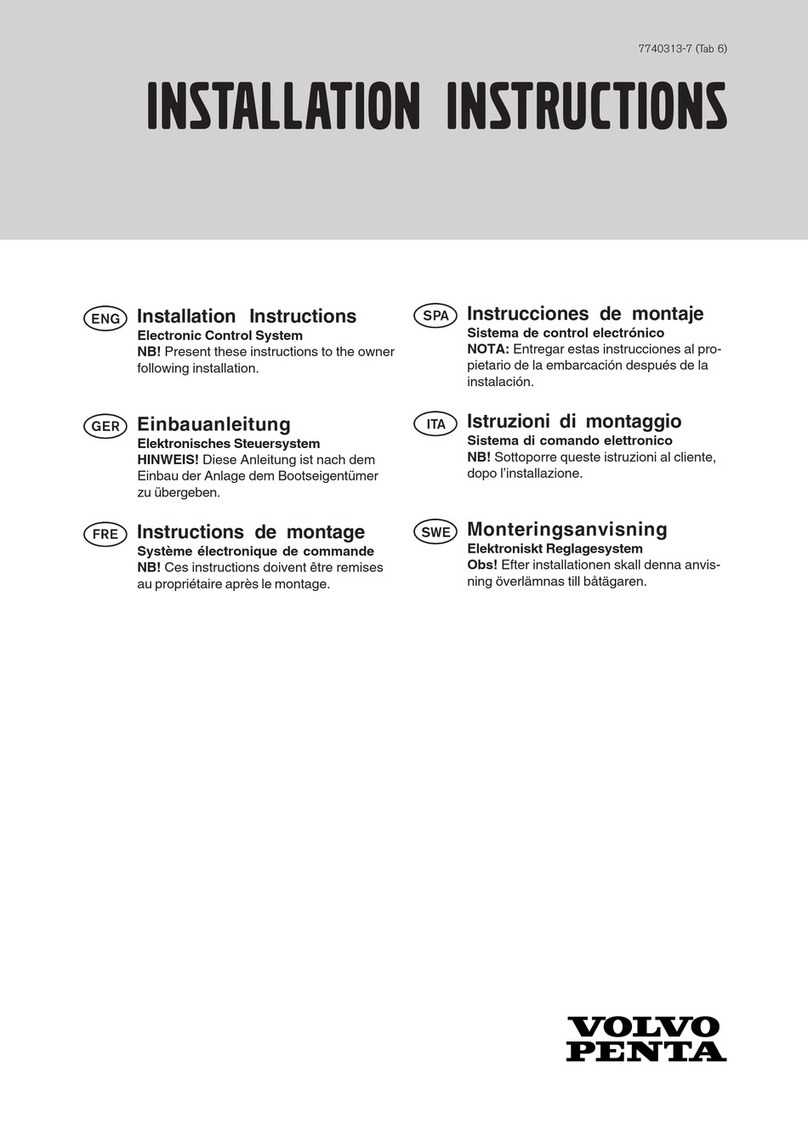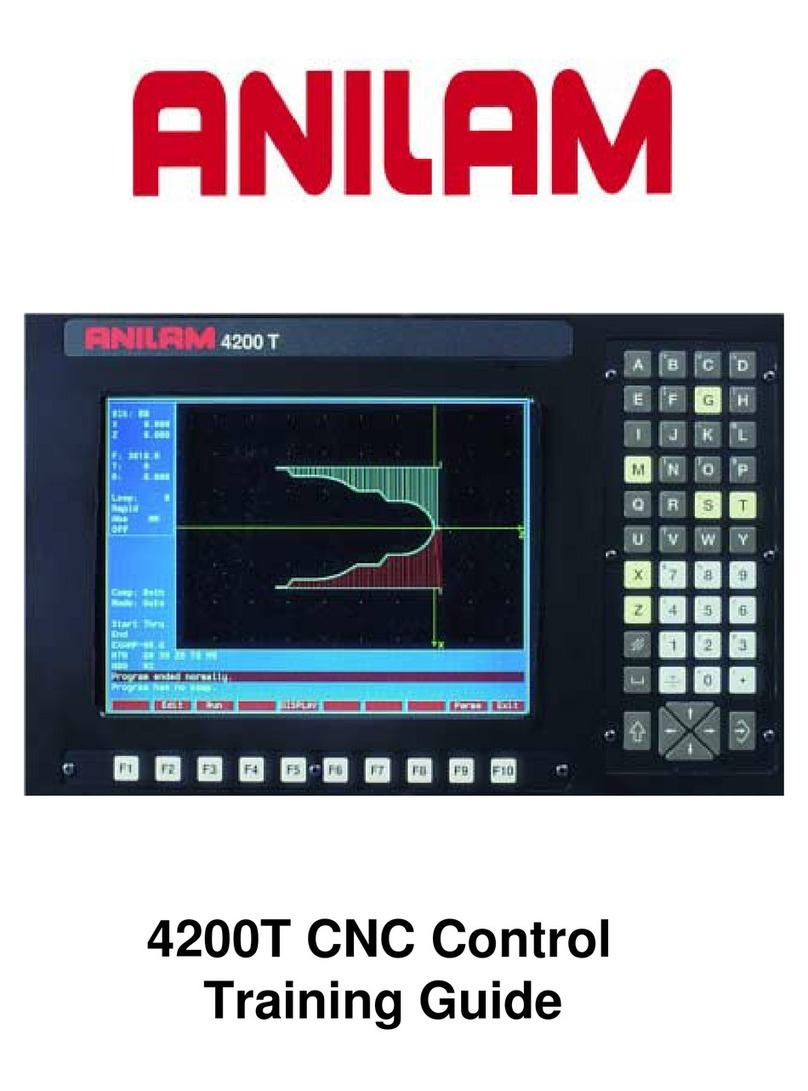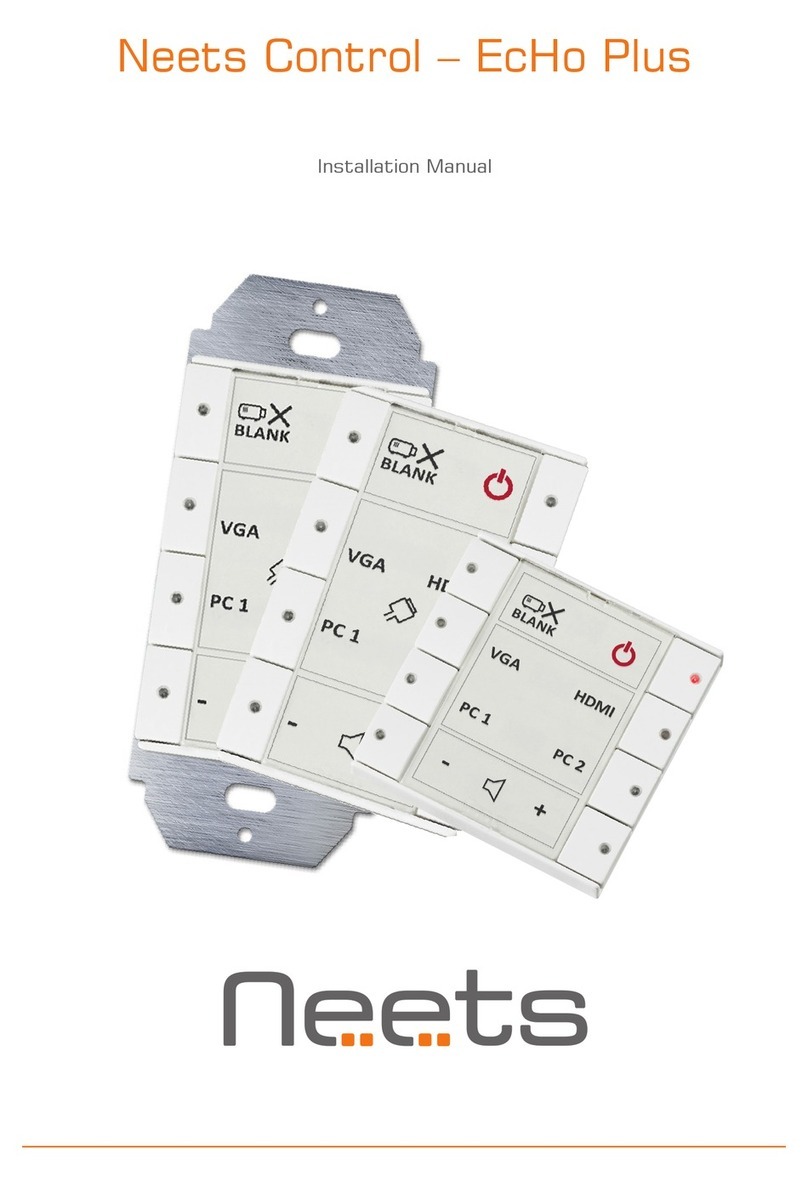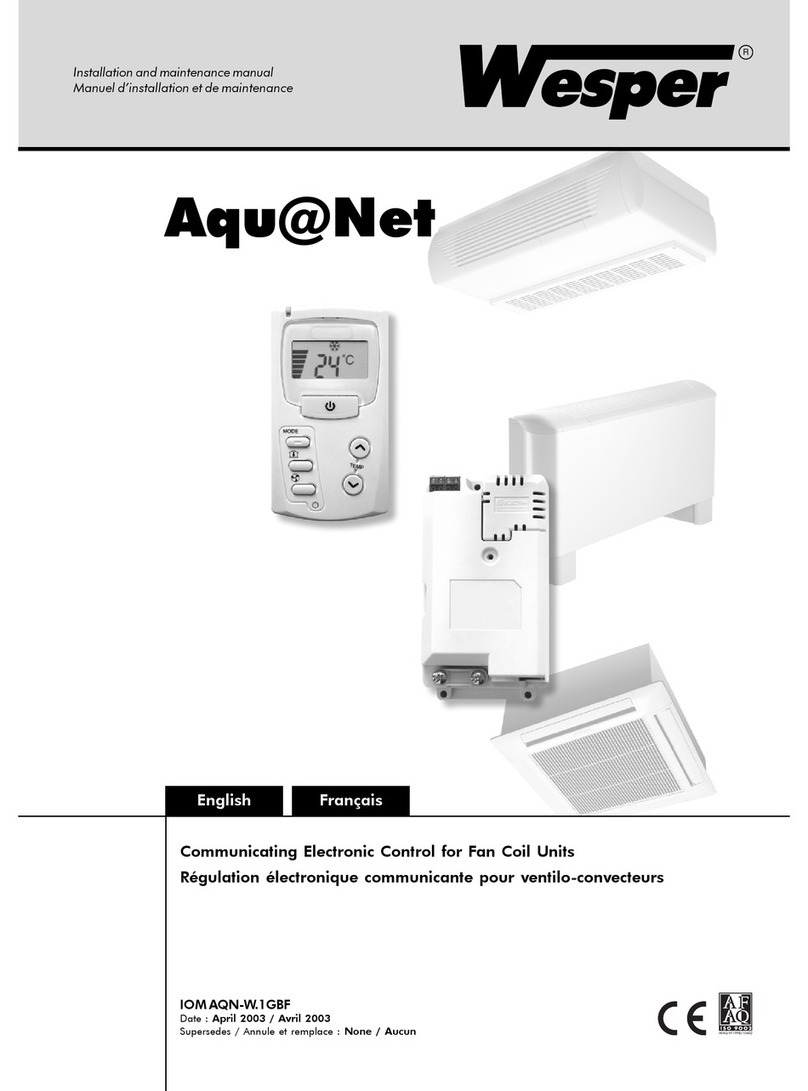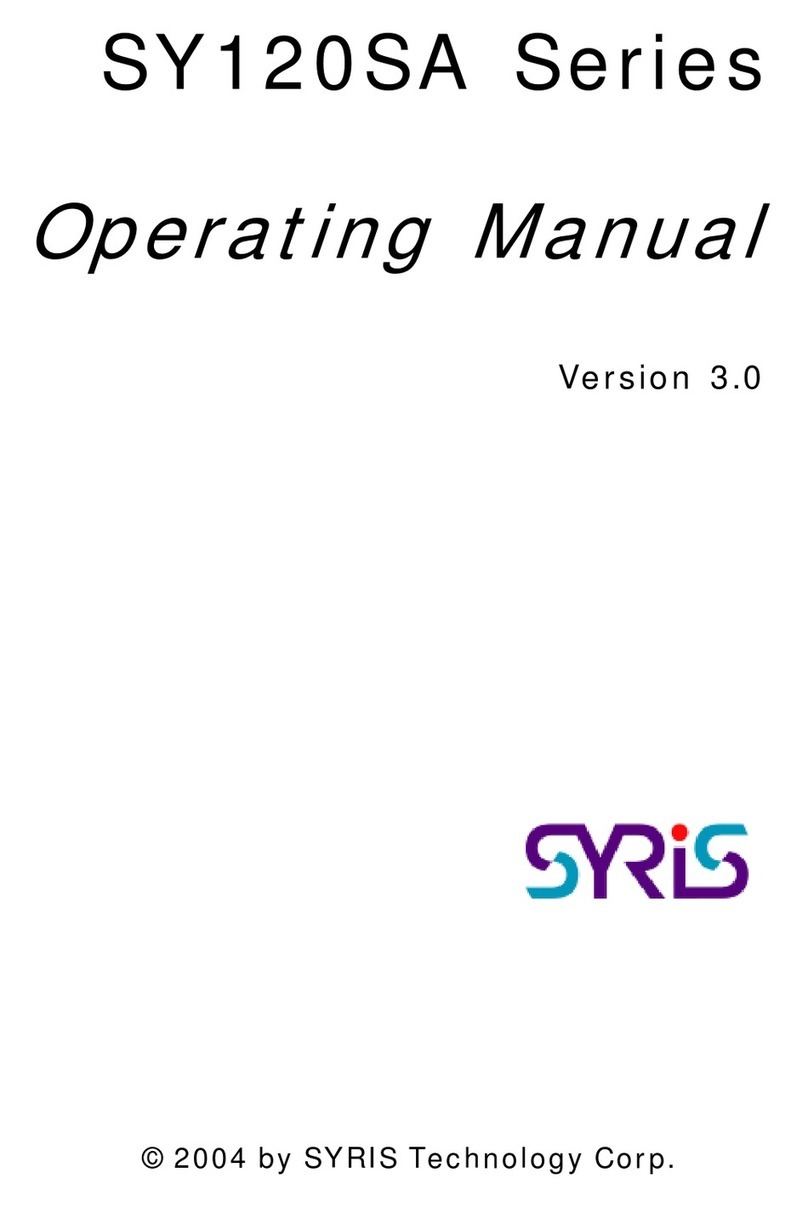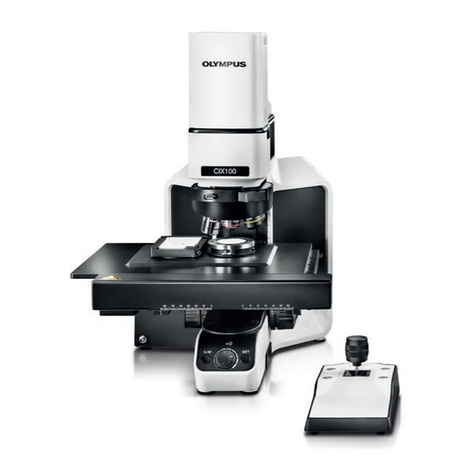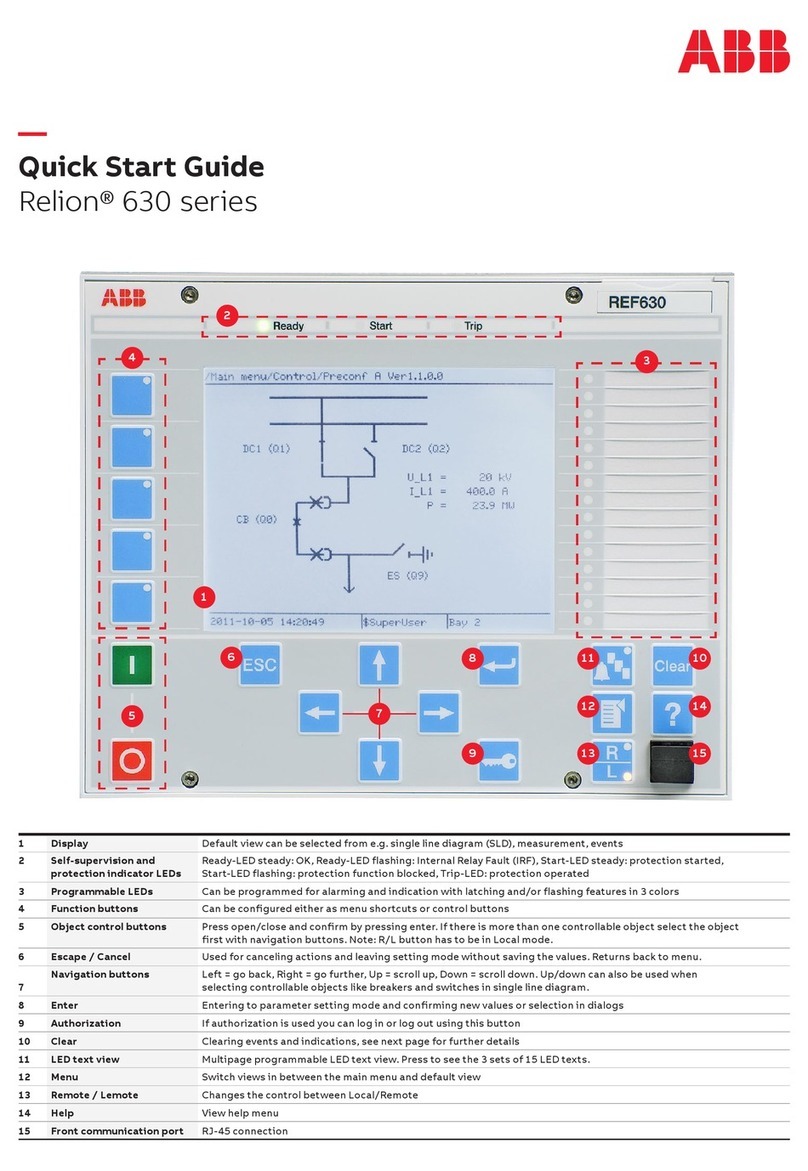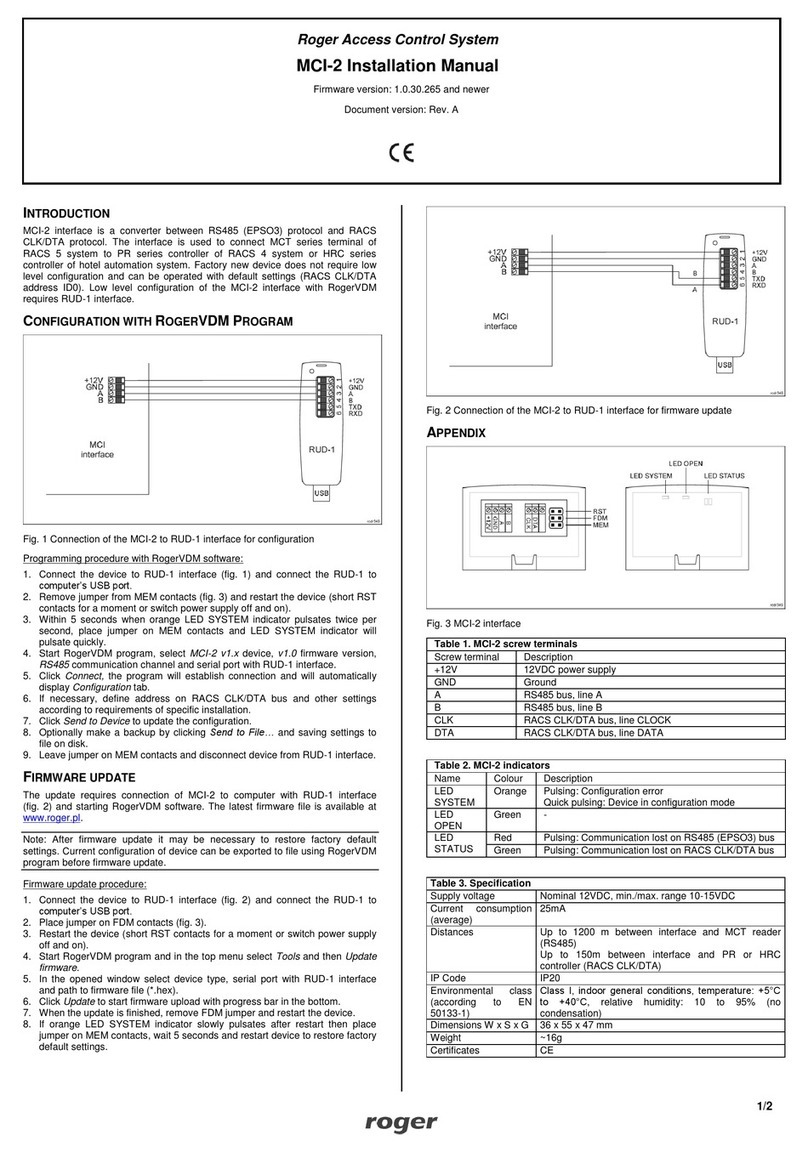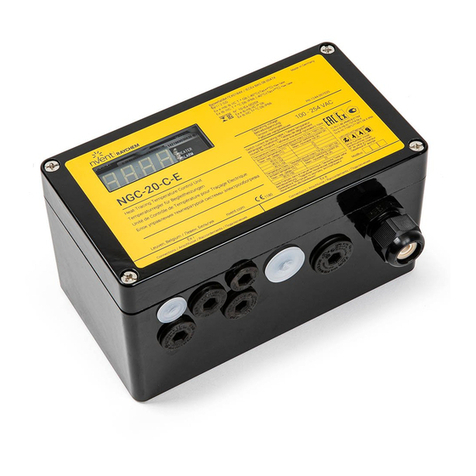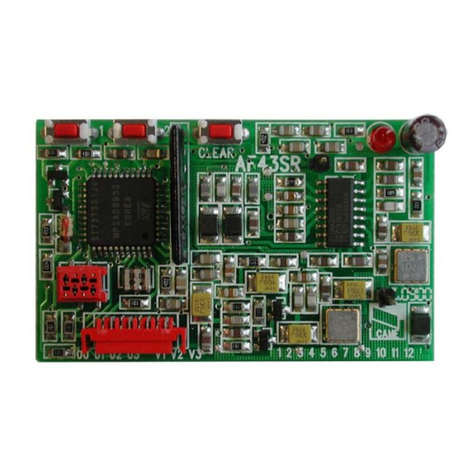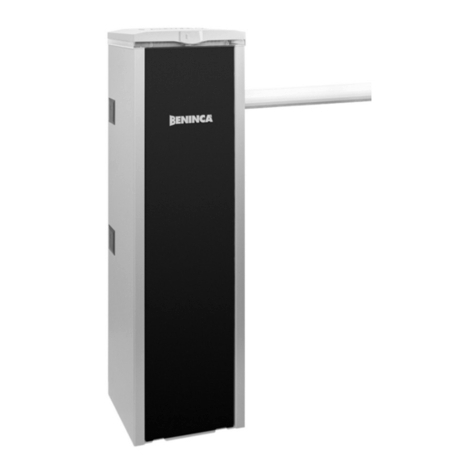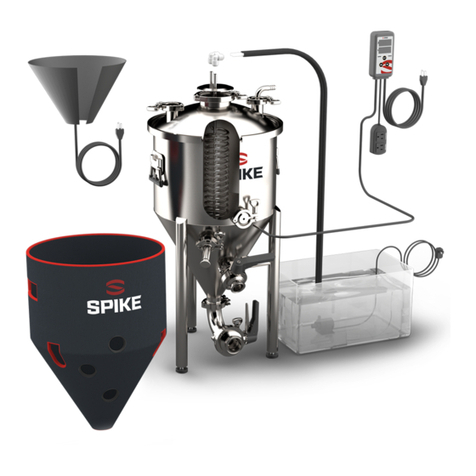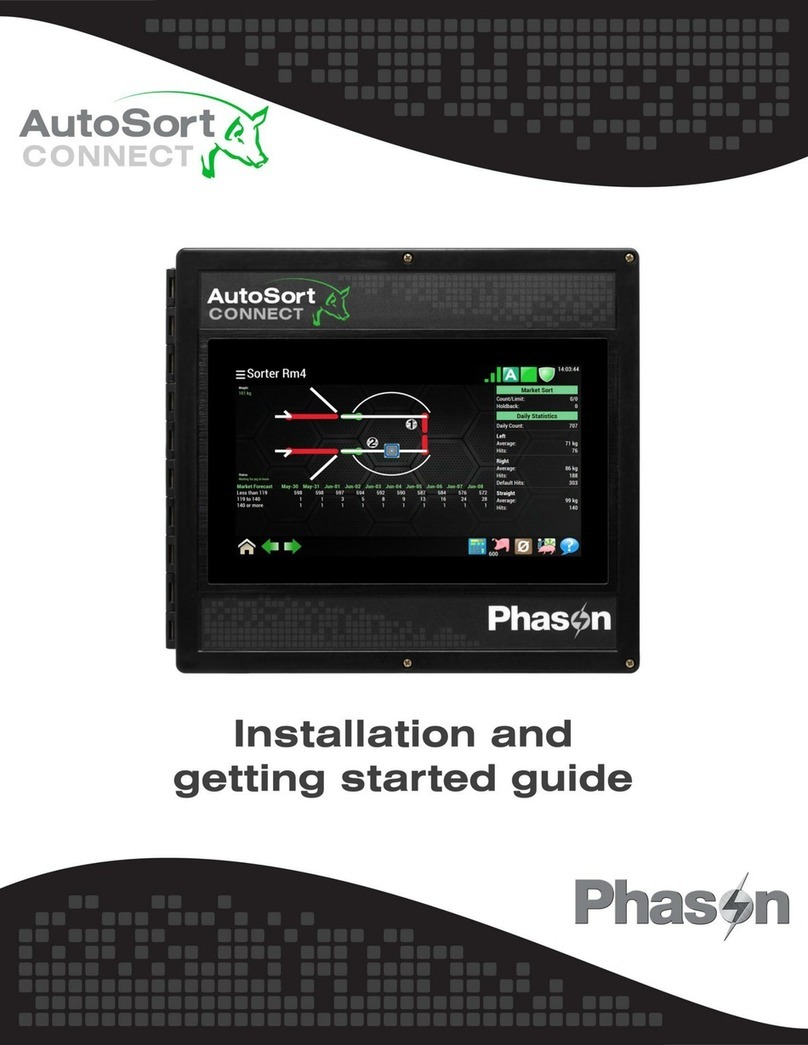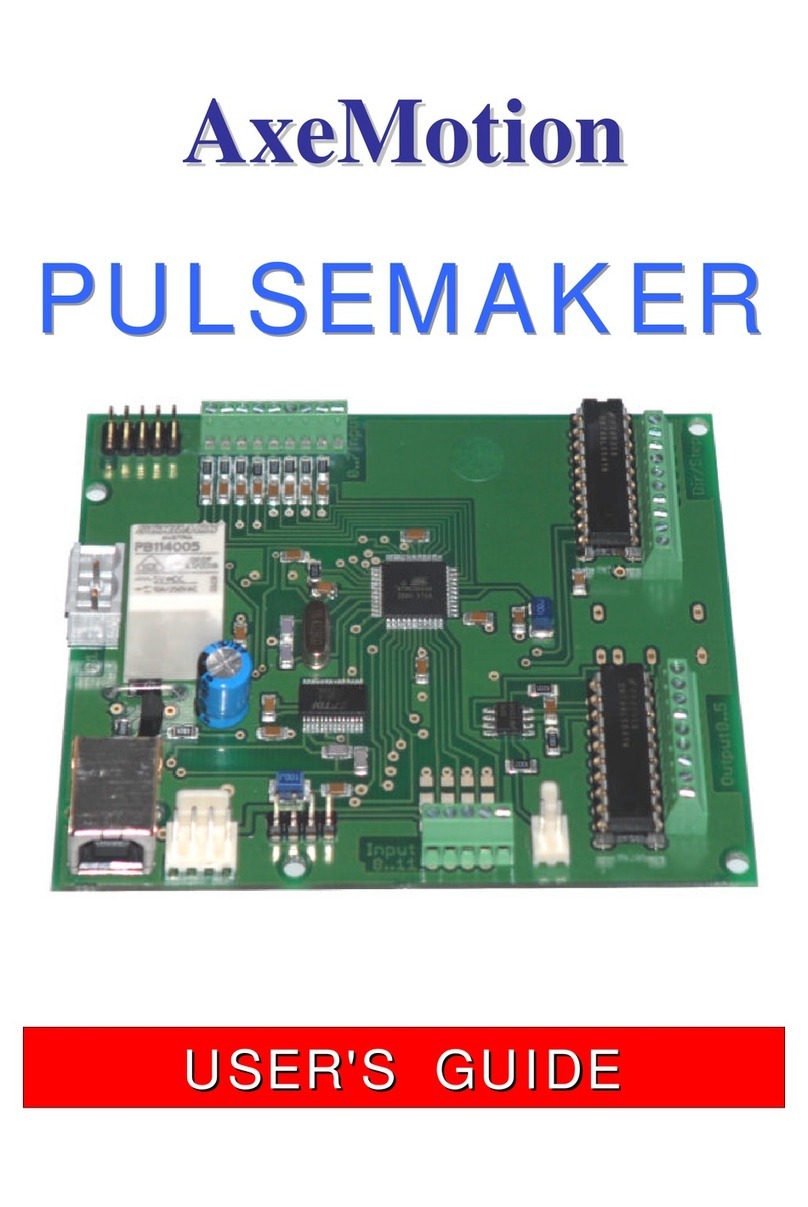elero Picolo 0 User manual

Picolo 0 synchronous control system
04/2016, TN: 2011448
Operating instructions
Please take care of the operating instructions!
EN

EN Translation from the original German version.
All other documents in different languages are translations of the original
version.
Subject to change without notice. All rights reserved in the event of
registrati-on of patents, working models or design patents.

Table of contents
EN
Table of contents
1 General................................................................................................3
1.1 Information on the Assembly Manual .............................................................. 3
1.2 Standards and guidelines................................................................................. 3
1.3 Intended use..................................................................................................... 3
1.4 Foreseeable misuse ........................................................................................ 4
1.5 Warranty and liability ........................................................................................ 4
1.6 Customer Service - manufacturer..................................................................... 5
2 Safety ..................................................................................................6
2.1 General safety notices...................................................................................... 6
2.1.1 Structure of the safety notices.......................................................................... 6
2.2 Safety principles ............................................................................................... 8
2.3 General duties of the operator.......................................................................... 9
2.4 Requirements of the personnel ........................................................................ 9
2.5 Safety notices on technical condition ............................................................. 10
2.6 Safety notices on transport, assembly, installation......................................... 10
2.7 Safety instructions for operation......................................................................11
2.8 Safety notices on electrical installation............................................................11
3 Product description .........................................................................12
3.1 General........................................................................................................... 12
3.2 Technicalspecications.................................................................................. 12
3.2.1Congurationoftechnicalparameters............................................................ 12
4 Assembly ..........................................................................................13
4.1 Fitting.............................................................................................................. 13
4.2 Electrical connection....................................................................................... 13
4.2.1 Function.......................................................................................................... 13
4.2.2 Operating modes............................................................................................ 14
4.2.3 Shutdown variants.......................................................................................... 15
4.2.4 Commissioning............................................................................................... 16
4.2.5 Shutdown faults.............................................................................................. 17
4.2.6 Circuit diagram .............................................................................................. 18
5 Declaration of Incorporation........................................................... 19

Table of contents
6 Waste disposal ................................................................................. 20
6.1 Scrapping ....................................................................................................... 20
6.2 Disposal of electrical and electronic components........................................... 20

3
General
EN
1 General
1.1 Information on the Assembly Manual
The contents structure is based on the life stages of the synchronous control
system (hereinafter referred to as "device").
The manufacturer reserves the right to make changes to the technical data
stated in this Assembly Manual. In individual cases they may deviate from the
respective device version without the information being categorically changed or
losing validity. The current state of the technical data can be obtained from the
manufacturer at any time. Any claims arising herefrom may not be asserted.
Deviations from the text and image statements are possible and are dependent
on the technical development, equipment and accessories of the device. The
manufacturer shall provide information on any deviant details on special versions
via the sales documentation. Other details shall remain unaffected thereby.
1.2 Standards and guidelines
During the design of the device the fundamental requirements for health and
safety were applied and provision was made for the appropriate legislation,
industrial standards and regulations.
ThesafetyelementisconrmedbytheDeclarationofIncorporation(seechapter
"Declaration of Incorporation"). All information on safety in this Assembly Manual
refers to legislation and regulations currently valid in Germany. All information in
this Assembly Manual must be complied with at all times and to the full extent.
In addition to the safety notices in this Assembly Manual, the regulations appli-
cable at the place of installation with regard to accident prevention, environment
protection and occupational safety must be observed and adhered to. The gui-
delines and standards for safety evaluation can be found in the Declaration
of Incorporation.
1.3 Intended use
The device is intended for the synchronous control of two linear drives from the
Picolo0series.Othereldsofapplicationmustbeagreedinadvancewiththe
manufacturer.
The device must not be used in areas where there is a risk of injury to personnel
or in rooms in potentially explosive environments.

4
General
If a direct or indirect hazard to personnel cannot be ruled out, additional measu-
res (e.g. covers, barriers, etc.) must be taken in order to minimise the potential
risk accordingly.
The operator alone is liable for all damage arising from the non-intended use
of the device. The manufacturer assumes no liability for personal injury and
material damage caused through misuse or procedural errors, improper use
and commissioning.
The device must only be operated by trained and authorised specialist staff who
comply with all safety instructions.
The safe and error-free use and operating safety of the device can only be
guaranteed on the basis of the intended use according to the information in
this Assembly Manual.
Intended use includes observation of and adherence to all safety instructions
speciedinthisAssemblyManual,aswellasallapplicableregulationsofpro-
fessional associations and the valid legislation regards environment protection.
Adherence to the operating rules prescribed in this Assembly Manual also form
part of the intended use.
1.4 Foreseeable misuse
Installation deviating from the intended purpose approved by the manufacturer
is considered foreseeable misuse.
1.5 Warranty and liability
In principle, the General Terms & Conditions of Sale and Delivery of the ma-
nufacturer apply. The Terms & Conditions of Sale and Delivery form part of the
sales documentation and are transferred to the operator upon delivery. Liability
claims for personal injury and material damage shall be excluded if they are the
result of one or more of the following causes:
•Non-intended use of the device
•Improper assembly, commissioning or operation of the device
•Changes to the design and construction of the device without written
permission from the manufacturer

5
General
EN
• Operating the device with improperly installed connections and defective or
improperly installed safety and protective equipment
• Non-compliance with safety regulations and notices in this Assembly Manual
• Exceedingthelimitsofthespeciedtechnicalspecications
1.6 Customer Service - manufacturer
The device must only be repaired by the manufacturer in the event of a fault.
The address to send the device to customer service can be found on the inside
of the back page.
If you have not purchased the device directly from elero, please contact the
manufacturer of the machine or the supplier of the device.
Mechanically secure the system before disassembling the device. The device
must not be separated from the system by force.

6
Safety
2 Safety
2.1 General safety notices
This Assembly Manual contains all safety notices that must be observed to avoid
and prevent risks when working with the device in the individual life cycles.
Safeuseofthedeviceisguaranteedwhenallthespeciedsafetynotices
are adhered to.
2.1.1 Structure of the safety notices
Thesafetynoticesinthisdocumentareidentiedwithsafetysymbolsanddesig-
ned in accordance with the SAFE principle. They contain information on the type
and source of risk, the possible consequences, as well as the prevention
of the risk.
The following table provides a description of the degrees of risk with possible
physical injury, as they are used in this Assembly Manual.
Symbol
Key word
Meaning
DANGER Warns of an accident that will occur if the ins-
tructions are not followed, which may lead to
life-threatening, irreversible injuries or death.
WARNING Warns of an accident that may occur if the
instructions are not followed, which may lead
to serious, perhaps life-threatening, irreversib-
le injuries or death.
CAUTION Warns of an accident that may occur if the
instructions are not followed, which may lead
to minor, reversible injuries.

7
Safety
EN
The following table describes the symbols used in the present Assembly Manual,
which are used for the graphic display of danger situations in connection with
the symbol for the degree of risk.
Symbol
Meaning
Risk of electrical voltage or electric shock:
This symbol refers to risks associated with
electrical currents.
Risk of crushing and killing persons:
This symbol refers to dangers associated where the enti-
re body or individual limbs may become crushed or suffer
injury.
The following table describes the situations used in this Assembly Manual where
damage may occur to the product or refers to important facts, states, tips and
information.
Symbol
Key word
Meaning
CAUTION This symbol warns of possible material damage.
This symbol refers to important facts and states,
as well as to further information in this Assembly
Manual.Furthermore,itreferstospecicinstruc-
tions which give additional information on or provide
assistance in performing a process in a simpler
manner.
The following is an example of the structure of a safety notice:
DANGER
Type and source of hazard
Explanation of the type and source of hazard
• Measures to avoid danger.

8
Safety
2.2 Safety principles
The device is built according to state-of-the-art technology and the generally
accepted safety standards. The device is safe to operate. During the design of
the device, the fundamental requirements for health and safety were applied
and provision was made for the appropriate legislation, industrial standards and
regulations.ThesafetyofthedeviceisconrmedintheDeclarationofIncorpo-
ration.
All details pertaining to safety relate to the regulations from the European Union,
which are valid at this time. In other countries the operator must ensure that the
relevant laws and national regulations are adhered to.
In addition to the safety notices in this Assembly Manual, the generally appli-
cable regulations regarding accident prevention and environmental protection
must be observed and complied with.
The device must only be used when in perfect working order, for its intended
use, and in compliance with the safety notices in this Assembly Manual. The
device is designed for the application stated in the chapter "Intended use". In the
event of non-intended use, injury to the life and limbs of the user or a third party
may result or the device may be impacted or other material damage caused.
Accidents or near misses during use of the device which led or could have led
to personal injuries and/or damage in the work environment must be reported
directly to the manufacturer with immediate effect.
AllsafetynoticesspeciedintheAssemblyManualandonthedevicemustbe
adhered to. In addition to these safety notices, the operator must ensure that all
national and international regulations applicable in the respective country of use,
as well as other binding regulations on operational safety, accident prevention
and environment protections, are complied with. All work on the device must
only be performed by trained and authorised personnel who have received the
appropriate safety instructions.

9
Safety
EN
2.3 General duties of the operator
RThe operator is obliged to only operate the device in a fault-free and opera-
tionally safe working condition. He must ensure that, in addition to the safety
notices in the Assembly Manual, the generally accepted safety and accident
preventionregulations,thespecicationsofDINVDE0100andtheprovisi-
ons on environment protection in the respective country of application, are
observed and complied with.
RThe operator is responsible that all work with the device is performed by
trained and authorised personnel who have received the appropriate safety
instructions.
RUltimately responsible for accident-free operation is the operator of the
device or the personnel authorised by the operator.
RTheoperatorisresponsibleforadheringtothetechnicalspecications.
2.4 Requirements of the personnel
REach person who is commissioned to work with the device must read and
understand the Assembly Manual in its entirety before he/she carries out
the respective work. This also applies if the assigned person has previously
worked on such a device or was trained to do so.
RAll work on the device must only be performed by trained and authorised
personnel who have received the appropriate safety instructions. Before
starting any operations, personnel must be made aware of the hazards
involved in handling the device.
RAllpersonsmustonlyperformworkaccordingtotheirqualications.The
areasofresponsibilityoftherespectivepersonnelmustbeclearlyspecied.
RAny personnel who have been commissioned to work with the device must
have no physical limitations, limitations on attention or judgement, whether
temporary or permanent (e.g. due to overtiredness).
RMinorsorpersonswhoareundertheinuenceofalcohol,drugsormedica-
tion, are prohibited from working with the device, as well as performing all
assembly, disassembly and cleaning work.
RPersonnel must wear the suitable personal protective gear appropriate to
the work and present work environments.

10
Safety
2.5 Safety notices on technical condition
RThe device must be checked before installation for damage and proper
condition.
RThe operator is obliged to only operate the device in a fault-free and opera-
tionally safe working condition. The technical condition must always comply
with legal requirements.
RIf risks to persons or changes in the operational behaviour are detected, the
device must be shut down immediately and the incident reported to superiors
or operator.
RThe device may only be connected to the energy supply lines intended and
designed for this purpose. The permissible type of voltage and operating
voltage are stated on the type plate.
RNochanges,extensionsorretrottingmaybeperformedtothedevice
without the approval of the manufacturer.
2.6 Safety notices on transport, assembly, installation
Responsibility for the transport of the device principally rests with the respective
transport company. The following safety requirements must be complied with
during transport, assembly and installation of the device.
RWhen transporting the device, it should be secured according to the instruc-
tions accompanying the means of transportation employed.
ROnlythepointdenedonthedevicemaybeusedasasecuringpoint.
(ttingonmountingrail).
RIn principle, assembly and installation may only be conducted by trained
andqualiedpersonnel.

11
Safety
EN
2.7 Safety instructions for operation
RThe operator of the device is obligated to ensure the safe and proper state
of the device before the initial commissioning.
RThis is also necessary during the operation of the device at regular intervals
determined by the operator.
2.8 Safety notices on electrical installation
RAll work on electrical connections must only be performed by authorised
electricians in accordance with the applicable regulations and provisions
ofthetradeassociation,inparticularthespecicationsinaccordance
with DIN VDE 0100. Furthermore, the national statutory regulations of
the respective country of application must be observed.
RIn the event of defects such as loose connections or defective or damaged
cables, the device must not be operated.
RIn the event of faults with the electrical equipment, the device must be shut
down immediately.
RThe device must be switched off before inspection, assembly and
disassembly work.
RThe device must not be hosed down with a high-pressure cleaner or a
steam blaster.
The following must be checked before connecting the device to the power supply:
RAre all electrical connections, safety devices, safeguards, etc. properly
installed, connected and earthed?
RIstheintendedpowerconnectiondesignedaccordingtothespecications
in the electrical circuit diagram (voltage type, voltage level)?
RHas the supply line been isolated?

12
Product description
3 Product description
3.1 General
The device is intended for the synchronous control of two linear drives from the
Picolo 0 series. The minimum path differences are controlled during moving.
The two drives have internal non-adjustable stops as end positions.
The end position is switched off by the device and not the drives.
3.2 Technical specications
All information in this chapter refers to an ambient temperature of 20 °C.
3.2.1 Conguration of technical parameters
Technical specications
Rated voltage 24VDC±15%,residualripple≤5%
Rated current 4 A
Power 96 W
Duty cycle KB 7 min
Readiness for operation after < 0.2 s
Maximum deviation 1 mm
Weight approx. 110 g
Housing Plastic
Dimensions (L x B x H) 95 x 70 x 60 mm
Protection class IP 20
Operating temperature range -20 °C to +80 °C (Version B: 0 °C to +80 °C)
Airborne noise emission < 70 dB(A)
Tab. 1 Technical parameters
CAUTION
Damage to the device through overvoltage
•Voltage supply above 28 V DC causes damage to the device.

13
Assembly
EN
4 Assembly
WARNING
Risk of injury by electrical current.
Electric shock possible.
• Electrical work must only be performed by an authorised electrician.
WARNING
Risk of life-threatening injury caused by faulty electrical connection.
Electric shock possible.
• Electrical work must only be performed by an authorised electrician.
CAUTION
Damage to the device through incorrect assembly
• Observe the protection class.
4.1 Fitting
The device is intended for installation in a switchgear cabinet or switch cabinet.
Itisttedonamountingrail.
4.2 Electrical connection
The device must be connected according to the circuit diagram.
The shield of the respective drive must be clamped at "0 V" of the respective
connection at the device.
Only drives without internal power shutdown and with an impulse transmitter
may be used.
4.2.1 Function
By switching on the rated voltage at the device the two drives are driven out or in
synchronously. The drive direction depends on the polarity of the supply voltage.
The two drives have internal non-adjustable stops as end positions.
The end position is switched off by the device, which stops the drives.

14
Assembly
The control system controls the speeds of the drives so that a minimum path
difference arises.
Between the two drives a position difference may occur, which is retained during
synchronisation as the synchronisation is always controlled from the start position.
The synchronisation is controlled depending on the start position with a typical
precision of 0.5 mm. A fault shutdown is registered for a position difference
greater than 1 mm.
4.2.2 Operating modes
CAUTION
Damage to the device
• The operating modes may only be adjusted when the device is in an idle state.
The sliding switches for adjusting the operating modes are located at the top on
the device.
By adjusting the sliding switches on the device a choice can be made between
two operating modes.
Switch
setting
Text Meaning
1 2
M1 + M2
synchro-
nous
The two drives are being synchronised (sliding switch at "2",
M1 + M2 synchronous).
1 2
M1 Only drive 1 moves (sliding switch at "1", M1).
In this operating mode the desired position difference between
the two drives can be set, with which synchronisation is effected
in the operating mode.

15
Assembly
EN
4.2.3 Shutdown variants
CAUTION
Damage to the device
• The shutdown variants can only be adjusted when the device is in an idle state.
The DIP switches for adjusting the operating modes are located in the inside of
the device. To actuate the DIP switch carefully unlock the device housing at the
side and remove.
Abb. 1 Control circuit board
1 DIP switch

16
Assembly
The following shutdown variants can be set using the two DIP switches:
Variants
Symbol
Meaning
1
The two drives move synchronously (both DIP switches at "OFF").
When the end position is reached by a drive the second drives
stops immediately (factory setting).
2
The two drives move synchronously (DIP switch 1 at "OFF"
and DIP switch 2 at "ON").
When the end position is reached by a drive the second drive
only stops after 2 seconds or as soon as it reaches its end
position.
3
The two drives move synchronously (DIP switch 1 at "ON" and
DIP switch 2 at "OFF").
When the end position is reached by a drive the second drive only
stops after 1 second or as soon as it reaches its end position.
4
The two drives move synchronously (both DIP switches at
"ON").
When the end position is reached by a drive the second drive
only stops after 2 seconds or as soon as it reaches its end
position.
Variant 2, 3 or 4 makes sense if due to regular stopping the total position diffe-
rence at the end positions is to be adjusted. For a permanent desired position
difference variant 1 must be used.
4.2.4 Commissioning
CAUTION
Damage to the device
• DIP switches and sliding switches must only be actuated when the device is
in an idle state.
The polarity of the supply voltage on the device determines the drive direction
of the drives.

17
Assembly
EN
For commissioning proceed as follows:
1. Connect the two drives to the device according to the circuit diagram.
2. Adjust the shutdown variants on the DIP switches.
3. Adjust the position difference by moving drive 1 if the positioning of the two
drives do not match.
4. Set the sliding switch on the device to "1", M1.
5. Adjust the position of drive 1 by applying the 24 V rated voltage with the
correct polarity to drive 2.
6. For synchronisation set the sliding switch on the device back to "2", M1 +
M2 synchronous.
9The two drives can now be driven synchronously.
4.2.5 Shutdown faults
There are various reasons why the drives shut down:
Overload:
The drive shuts down when a certain power is reached by the overcurrent switch
End position:
The drive shuts down when the end position is reached. The other drive shuts
down immediately or with a delay (depending on the operating mode).
Synchronisation fault:
If the position difference of the two drives exceeds 1 mm the drive shuts down.
Connection fault from sensor or motor:
If the wires from a motor or a sensor have been swapped the two drives
stop shortly after starting up.
Shutdown due to undervoltage:
If the supply voltage falls below 20 V the drives do not run or stop.

18
Assembly
4.2.6 Circuit diagram
X1 14 13
B
__
M
X1 7 8 9 10 11 12
W1
6x0,5 mm² CY
B
__
M
X1 5 6 1 2 3 4
W2
6x0,5 mm² CY
Synchronous control system
Picolo 0 Picolo 0
12 3 4 5 6
K1 K2
+ 24 V
GND
123 4 5 6
3 654
UB+ (-)
13 161514
1
63 54
2
UB- (+)
synchronous
M2
_
M1
_
21 21
1234567891011 12
242321 22
X1
W
X1
Drive out Drive in
+
-
P1 P2 P9 P7 P10 P8 P1 P2 P9 P7 P10 P8
+
-
0V
A
B
+5V
0V
A
B
+5V
3 654
UB+ (-)
13 161514
1
63 54
M1
2
UB- (+)
M1 + M2
M2
_
M1
_
21 21
1234567891011 12
242321 22
M1
sensor
M2
sensor
X1
W
X1
The shield of the respective drive must be clamped at "0 V" of the respective
connection to the device.
Other manuals for Picolo 0
1
Table of contents
Other elero Control System manuals

